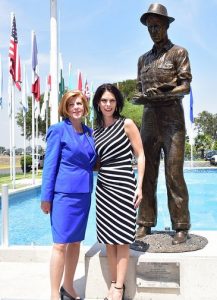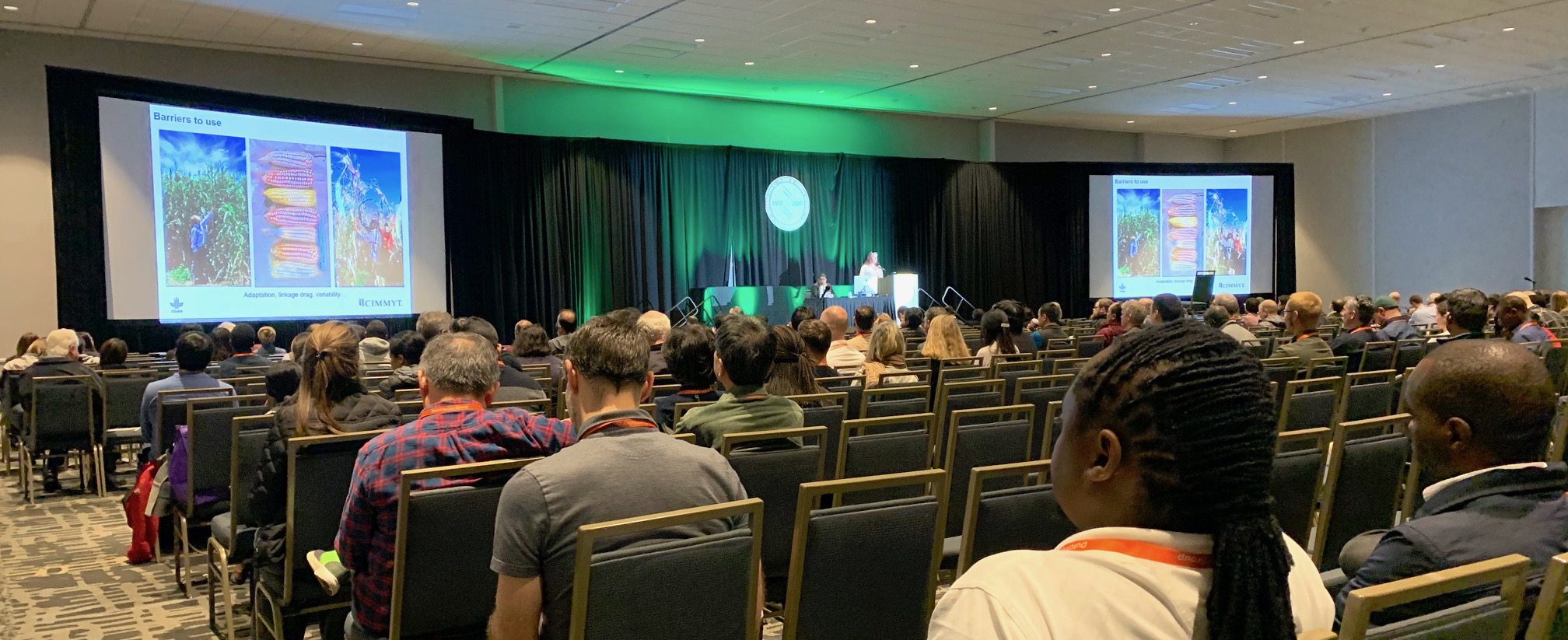
EL BATAN, Mexico (CIMMYT) – Encouraging youth willing to become “hunger fighters” to take up the challenges of farming despite erratic weather caused by climate change, drought, dwindling water supplies and nutrient-depleted soil, is key to future food security, said Julie Borlaug, associate director for external relations at the Norman Borlaug Institute for International Agriculture at Texas A&M University.
These hunger fighters must embrace technological innovation, creativity, bold ideas and collaborate across all disciplines, while also effectively engaging smallholder farmers and private and public sectors to come up with sustainable solutions, Borlaug said, adding that the average age of a farmer in the United States and Africa is well over 50 years.
Julie Borlaug, the granddaughter of 1970 Nobel Peace Prize laureate Norman Borlaug, a former key wheat breeder at the International Maize and Wheat Improvement Center (CIMMYT) known internationally as the father of the Green Revolution, will address delegates at the CIMMYT 50th anniversary conference on September 27, 2016 with a speech titled, “CIMMYT’s future as a Borlaug legacy.”
After 50 years, CIMMYT remains relevant in the fight for food security and an important part of the Borlaug legacy, Borlaug said, adding that technological innovation is needed to address agriculture and the challenge of climate change.
“Since the seven years of his passing, I know my grandfather would be pleased by the leadership team and all at CIMMYT. As hunger fighters and the next generation, they have made CIMMYT their institution and continue to advocate strongly for improvement in science and technology to feed the world,” she said.
Her grandfather, who started work on wheat improvement in the mid-1940s in Mexico, where CIMMYT is headquartered near Mexico City, led efforts to develop semi-dwarf wheat varieties in the mid-20th century that helped save more than 1 billion lives in Pakistan, India and other areas of the developing world. In his Nobel Peace Prize acceptance speech, Norman Borlaug paid tribute to the “army of hunger fighters” with whom he had worked.
Borlaug shared some views on CIMMYT and the future of agriculture in the following interview.
Q: What are the key challenges the world faces into the future?
In my opinion, the entire agricultural community should focus on addressing three major challenges: the first is climate change and erratic weather patterns. Droughts and a decline of limited natural resources such as water and soil are of major consequence to agricultural productivity. The second major challenge is the societal resistance to new technologies and innovation. And the third major challenge we are facing is how to engage the next generation to work in the agricultural sector.
To address the first challenge, we must have biotechnology and technological innovation across the board to address issues that will stem from climate change. The utilization of drought, heat and saline tolerant crops, informatics, and other innovations will be a necessity. Technology will be part of the integrated solution that creates better farming systems, more nutritious foods and addresses all the issues that come with climate change and sustainability.
It is important to understand the societal resistance to new technologies and innovation. I understand their skepticisms and confusion. It is important to note that when speaking to these critics, we keep in mind the campaigns that have been mounted against our industry and have spread fear and inaccurate information that the public has accepted as fact. In my opinion, the agricultural industry has to improve in explaining to the public why modern agriculture is so important to our future and why the opposition to it cannot be permitted to deprive millions of people of its promise.
Q: What is significant about CIMMYT: What role has CIMMYT played in your area of work?
CIMMYT is both personally and professionally significant to me. Personally, I have grown up knowing how deeply invested, protective and grateful my grandfather was to the role CIMMYT played in his career, the Green Revolution and as a leader in international maize and wheat research. CIMMYT was not just a place in which my grandfather was employed but part of his family. All who met, worked with my grandfather or had the opportunity to have an early morning CIMMYT breakfast with him, remember the deep interest he had in their careers and research as well as his often too candid assessment of their current & future work. His passion for CIMMYT never faded and in the end of his life his return “home” to his Yaqui Valley wheat fields in Sonora, Mexico, gave him hope for the future of CIMMYT, the CGIAR system as a whole and international research and development in agriculture.
Professionally for me, CIMMYT has helped me learn more about my grandfather professionally but it has also broadened my depth and knowledge of maize and wheat research as well as the importance for the CG system. At the Borlaug Institute at Texas A&M, we work in international agriculture development and have had the opportunity to partner with CIMMYT on many occasions. I promised my grandfather that I would help to bring all the Borlaug Legacy Institutions together to work collaboratively and not competitively as we once had. CIMMYT was the first Borlaug legacy institution to join us in working collectively towards my grandfather legacy to end hunger and poverty.
 Gender equality, youth and social inclusion
Gender equality, youth and social inclusion 